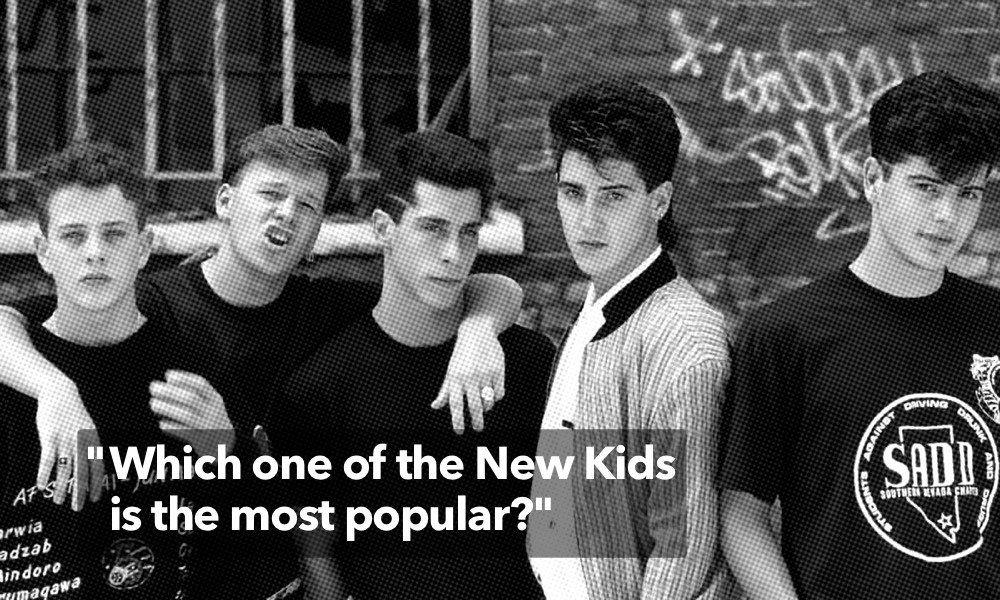
The trademark Fair Use Doctrine allows for certain uses of another company’s trademarks when the use is “descriptive of and used fairly and in good faith only to describe the goods or services of such party.” 15 U.S.C. § 1115(b)(4)
There are two types of trademark fair use. First, you can always use a word in it’s normal, non-trademark sense. E.g., you can always use the word “apple” to refer to the fruit. Calling the fruit an apple will never infringe Apple Inc.’s trademark rights, which apply to computers.
The second type of fair use is “Nominative Fair Use”. This is the right to use another company’s branding to refer to that company for purposes such as:
- News Reporting
- Commentary
- Parody
- Comparative Advertising
The seminal case here is New Kids on the Block.1 In this case, the defendants were newspapers that “polled their readers seeking an answer to a pressing question: Which one of the New Kids is the most popular?”
The court found that “a commercial user is entitled to a nominative fair use defense provided he meets the following three requirements:
- First, the product or service in question must be one not readily identifiable without use of the trademark;
- second, only so much of the mark or marks may be used as is reasonably necessary to identify the product or service; and
- third, the user must do nothing that would, in conjunction with the mark, suggest sponsorship or endorsement by the trademark holder.”
The second point is important. To be safe, you should try to use the minimum amount of a trademark necessary to identify the company or product. Using the trademark owners specific font and logo increases your risk of infringement. Using a plain font with no logo decreases your risk of infringement.2
Compatibility
You can generally use another company’s trademark to advertise the compatibility of your product with the other company’s product.
For example, in Frontrange v. NewRoad Software, NewRoad was allowed to use Frontrange’s HEAT trademark to advertise that NewRoad’s software was compatible. The judge concluded that “HEAT is not easily described without the use of its mark, and it may be almost impossible for NewRoad to communicate Autobahn’s compatibility with HEAT without using the mark.” 3
Comparative Advertising
Using another company’s trademark in comparative advertising is largely allowed. For example, Nabisco was allowed to advertise that “Life Savers® DelitesTM are 25% lower in calories than Werther’s® Original candies” without infringing the Werther’s trademark.4
Domain Names
Using another company’s trademark in your domain name is risky, and often leads to infringement.
A truck dealer was infringing the PETERBILT and KENWORTH trademarks by using the domain names “peterbiltnewtrucks.com,” “kenworthusedtrucks.com,” and “kenworthtruckdealers.com.” 5
But an independent auto broker was allowed to use the URLS buy-a-lexus.com and buyorleaselexus.com without infringing Toyota’s trademarks.6 The court found that the addition of “buy-a” and “boyorlease” did not suggest any sponsorship or affiliation with Lexus or Toyota.
Further Reading
Fair Use of Trademarks (Intended for a non-legal audience). INTA January 2016.
Second Circuit Expands Split on Nominative Fair Use. INTA Bulletin, November 2016. Different circuits apply different variations of the New Kids on the Block rule. This post nicely summarizes the variations.
-
New Kids on the Block v. News Am. Publishing, Inc., 971 F.2d 302 (9th Cir. 1992). ↩
-
Playboy Enterprises, Inc. v. Welles, 279 F.3d 796 (9th Cir. 2002) ↩
-
Frontrange Solutions USA, Inc. v. Newroad Software, Inc., 505 F.Supp.2d 821 (D. Colo. 2007). ↩
-
August Storck K.G. v. Nabisco, Inc., 59 F.3d 616, 618 (7th Cir. 1995) ↩
-
PACCAR, Inc. v. TeleScan Techs., LLC, 319 F.3d 243 (6th Cir. 2003). ↩
-
Toyota Motor Sales, Inc. v. Tabari, 610 F.3d 1171 (9th Cir. 2010). ↩